September 23, 2016
Air Date: September 23, 2016
FULL SHOW
SEGMENTS
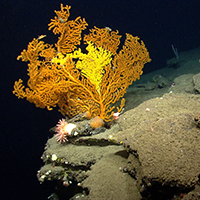
Saving East Coast Sea Life
View the page for this story
President Obama has designated nearly 5000 square miles of canyons and deep ravines in the seas off Massachusetts the first marine national monument in the Atlantic. Speaking with Host Steve Curwood, New England Aquarium Scientist Scott Kraus describes this maritime treasure’s extraordinarily rich biological diversity, from massive corals to single-celled organisms the size of softballs. (08:20)

EPA Sued Over Ocean Acidification
View the page for this story
The Center for Biological Diversity has filed a lawsuit against the Environmental Protection Agency, that accuses the EPA of failing to set appropriate standards to protect coastal waters from acidification. Emily Jeffers, an attorney for the Center, tells host Steve Curwood about the suit and its rationale. (06:30)

One Smart Slime-Emerging Science Note
/ Charlotte RuttyView the page for this story
A goopy single-celled organism may seem like an unlikely choice for research on cognition. But, as Living on Earth’s Charlotte Rutty reports, the yellow slime mold has a lot to teach us about how creatures make decisions when they apparently don’t have brains. (02:20)
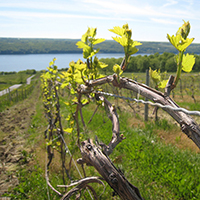
Wine, Water and Natural Gas
/ Julie GrantView the page for this story
Fracking has been banned in New York since 2015. But as the Allegheny Front’s Julie Grant reports, a proposal to store natural gas in underground salt caverns in the state's scenic Finger Lakes region has touched off opposition concerned about the safety of a local water source. (07:20)
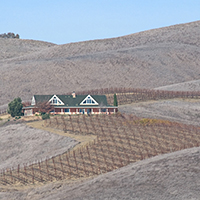
Beyond The Headlines
/ Peter DykstraView the page for this story
In this week’s trip Beyond the Headlines, Peter Dykstra takes host Steve Curwood back to the music of the 1970s to invoke long-standing and maybe prescient thoughts on the California drought. And new studies reveal how nutrient pollution in the ocean is helping disrupt the vital soundscape marine life needs. Also in environmental history, some fish and other wildlife that became potent symbols in U.S. politics. (04:05)
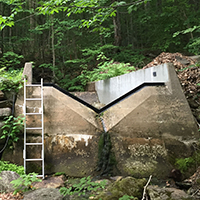
Hubbard Brook: An 8,000-acre Test Tube
View the page for this story
In the 1950s, the U.S. Forest Service set aside a swath of the White Mountains for forest science research. The Hubbard Brook Experimental Forest has proven invaluable as the site of long-term and groundbreaking studies. Scientists Gene Likens and Dick Holmes helped begin the project and have been involved in research there for decades. They take host Steve Curwood into the forest to explain their discoveries of acid rain and the consequences of clear-cutting. (17:45)
Show Credits and Funders
Show Transcript
HOST: Steve Curwood
GUESTS: Scott Kraus, Emily Jeffers, Richard Holmes, Gene Likens
REPORTERS: Julie Grant, Charlotte Rutty
[THEME]
CURWOOD: I'm Steve Curwood. President Obama has designated the first Marine Monument in the Atlantic – deep canyons and mountains with extraordinary biodiversity.
KRAUS: There’s a coral called Bubblegum coral and it looks like somebody just kept sticking bubblegum together till you had a very large coral piece. These things grow eight to 10 feet tall, and they live over 1,000 years. It’s like an underwater Joshua Tree.
CURWOOD: Some call this reserve the “Serengeti of the sea”. Also, worries that plans to store liquid natural gas in salt caverns in upstate New York could make local water quality even worse.
HAZLITT: Seneca Lake is the saltiest lake in the Finger Lakes, and it’s because of those salt caverns. They’re already telling people if you’re young or elderly or have high blood pressure don’t drink this water. This is the water source for over 100,000 people. There’s no other water source, so what are people supposed to do?
CURWOOD: That and more this week, on Living on Earth. Stick around.
[NEWSBREAK MUSIC: Boards Of Canada “Zoetrope” from “In A Beautiful Place Out In The Country” (Warp Records 2000)]
[THEME]
Saving East Coast Sea Life
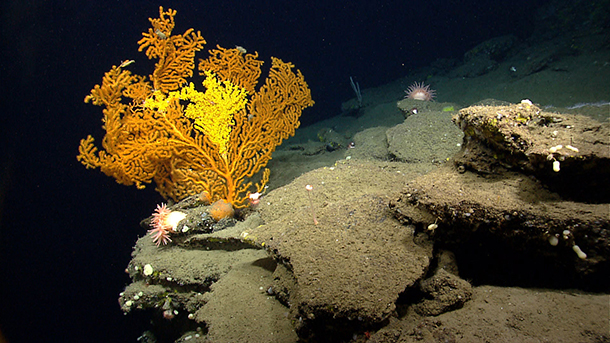
A peek at what lies below the surface less than 150 miles of the New England coast, where President Obama recently designated the Atlantic’s first National Marine Monument. (Photo: Green Fire Productions, Flickr CC BY 2.0)
CURWOOD: From the Jennifer and Ted Stanley Studios at the University of Massachusetts Boston and PRI, this is Living on Earth. I’m Steve Curwood.
President Obama has created the first national marine monument in the Atlantic Ocean, at the edge of the famous fishing grounds of George’s Bank. There are canyons deeper than the Grand Canyon and four large underwater mountains in the nearly 5,000 square miles of ocean that now has the same status as a national park. With a rich biodiversity that includes massive corals, New England Aquarium senior scientist Scott Kraus calls this area 130 miles off Cape Cod the "Serengeti of the Seas". He joins us now. Welcome to Living on Earth, Scott.
KRAUS: Thank you, Steve.
CURWOOD: So, most of us will ust never have the opportunity to explore this new marine monument the way to tourists can see America's national parks on land, the national monuments on land. But you have, so tell us what's it like there?
KRAUS: The Monument’s area is the edge of the continental shelf of the United States. So the water drops from the top of Georges Bank. It's perhaps 300, 400 meters deep, and all of a sudden, it drops off to four miles deep, and in that steep drop off there are underwater canyons created tens of thousands, hundreds of thousand years ago, and then in addition to that it also...Georges Bank sticks out into the Atlantic so you have these deep water currents coming up out of the Gulf Stream and elsewhere that rush up and bring a lot of nutrients out of the ocean floor to the surface. So, the place is remarkably productive.
CURWOOD: So what do you see? What kinds of creatures and what do you see in those canyons and around all those underwater mountains?

A sea urchin found along the Southeastern wall of Oceanographer Canyon, one of the three included in the monument. (Photo: NOAA Photo Library, Flickr CC BY 2.0)
KRAUS: In terms of the number of species that occurred there, and the number of animals it's significantly higher than all the surrounding areas. I guess the way I would explain it is, you can see thousands and thousands of dolphins and Pilot whales and Sperm whales extending along the shelf edge for miles and miles, and I have seen thousands at a time. The thing that it reminds me of is that those kind of National Geographic images of the great migrations on the African plains like the Wildebeest migrations and so on. It's just thousands of animals. And the only difference is that there's more diversity in some of these habitats. The Monument’s area has got, oh, probably eight different species of dolphins, several different species of Pilot whales and grampus, and then sperm whales and a lot of Beaked whales, stuff that you don't see in coastal waters at all. It's not your average whale watch.
CURWOOD: If you were to give me a short list, which species will be positively impacted by this new protected status of this marine territory?
KRAUS: Probably the deep sea corals. Deep sea corals are easily damaged by trawlers, or even traps setting on them can damage them. We've seen some evidence of that in the deep sea dives that have been done out there. So there's an incredible diversity and abundance of corals in this monuments area down in the canyons that are just beyond imagining. So, for example, there's a coral called Bubblegum coral and it looks like somebody just kept sticking bubblegum together until you had a very large coral piece. These things grow eight to 10 feet tall and they live over 1,000 years. It's like an underwater Joshua Tree, you know, these animals live for an extremely long time, but therefore they're quite fragile, you don't want to disturb them or break them cause they been around a lot longer than we have and it'll take them a long time to get back.

The monument includes four underwater seamounts and three underwater canyons, located along the Georges Bank. (Photo: The Pew Charitable Trusts)
CURWOOD: So let me ask you, specifically, what types of human activities does this designation as a National Marine Monument prohibit then?
KRAUS: It will prohibit all fishing. There's a phase out period for red crab and lobster over the next seven years, and then all commercial fishing will be banned. Recreational fishing is allowed. It eliminates all possible oil drilling. The mining issues will be put to bed as well. There will be no deep sea mining, so it's really protection from major industrial activities.
CURWOOD: Now, opponents of this Monument say it will have devastating impacts on New England's fishing industry. Your thoughts?
KRAUS: There are some fisherman who fish out there. I don't think there are any fishermen who fish out there year-round. Most of them are limited to a couple of seasons, and the data that I've seen on fishing activity out there indicates a very small number of people working there and a very small percentage of their time is spent there. So my suspicion is that this is not a big economic problem. I've heard wildly exaggerated numbers about thousands of fishermen and millions of dollars and the data just doesn't support that.
CURWOOD: How important is this area for helping breeding populations of fish up there on the continental shelf?
KRAUS: For this particular area we don't know that. Those kind of studies haven't been done, but the other thing it does that’s really important is that we live in a world where the oceans are warming fairly rapidly and they are becoming more acidic. The climatological changes in the north Atlantic are, and in fact in the Gulf of Maine, are happening faster than anywhere else in the North Atlantic, and so we really need reference habitats that are not disturbed by all kinds of human activities, and this is a really good one for that.
CURWOOD: So there was an earlier version of this proposed monument that covered an even wider part of the ocean. How convinced are you that the final plan adequately protects and preserves these important habitats in the Atlantic?
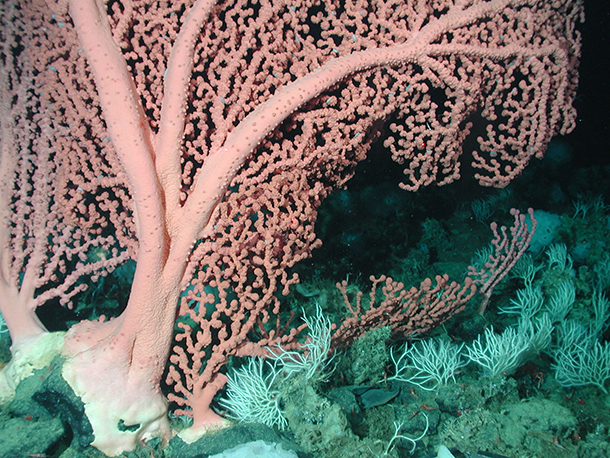
“Bubblegum Coral,” an organism found in the new monument. (NOAA Photo Library, Flickr CC BY 2.0)
KRAUS: You know, if you're a marine mammal, more is better. If you were a fisherman, you would say less is better. But bigger would have been better from a scientific point of view only because you would capture more of the diversity in that area. In the long term, I think it's too early to tell, but I think the advantage of this is that it puts a stake in the ground that allows us to start thinking about what a marine protected area might do, both for fisheries and for understanding climate change and understanding the ecosystems. This is an area that is not well studied. There's a lot more to do. There's big areas where we haven't had a look around. There's species being discovered there every time somebody goes down. I'm a marine mammal guy so I like whales, right? But my favorite animal in this monument is something called a Xenophyophore for which is the largest single celled animal in the world and they roll around in the sand and the bottom and they get sand on the outside. I don't know what they're thinking, but it's really impressive to have a cell the size of a softball.
CURWOOD: It's the size of a softball?
KRAUS: [LAUGHS]
CURWOOD: That's a big cell!
KRAUS: That's a big cell.
CURWOOD: So, how do you think this Monument is going to affect the way that we as a nation possibly think about the oceans, and about how we proceed with ocean conservation at the national level?
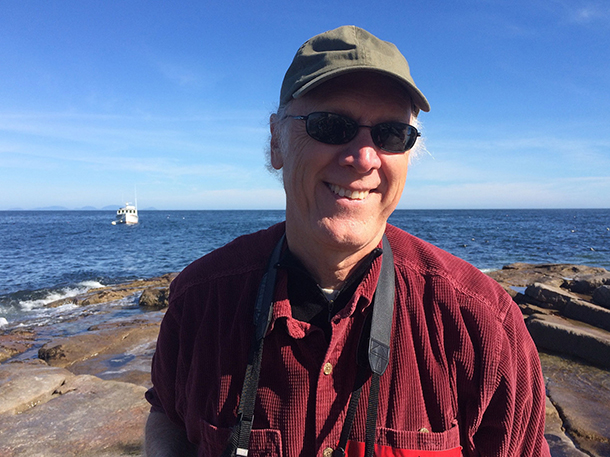
Scott Kraus is a senior scientist at the New England Aquarium in Boston, Massachusetts. (Photo: Scott Kraus)
KRAUS: These conversations are going to go on for a long time. I think that climate change is going to force the discussion into places that nobody expects, that there are going to be changes in commercial fisheries, there are going to be changes in sea level and coastal resilience that are going to make people think much more carefully about preservation, certainly of ecosystems. I mean, we've learned our lesson from, I would say, Katrina. If you look at the way in which we altered the coastal ecosystem outside of New Orleans, people are now realizing, oh my god, we've got to put back mangroves, we've got to get rid of these canals, we've got to do things that actually are more in keeping with the original shock absorbers that Mother Nature provided, and I suspect that we're going to see that kind of discussion take place around marine national protected areas all around the country.
CURWOOD: Scott Kraus is a Senior Scientist at the New England Aquarium and Research Professor at University of Massachusetts, Boston. Thanks much for taking the time today, Professor Kraus.
KRAUS: Thank you for having me.
Related links:
- Scott Kraus’s presentation and original research text assessing the then-proposed marine monument
- NOAA: What is a marine national monument?
- The President spoke about the monument at the Our Ocean Conference
- Obama also expanded the Papahanaumokuakea monument this year
- Press release from anti-monument organization Saving Seafood
- Scott Kraus UMass, Boston Faculty Profile
EPA Sued Over Ocean Acidification
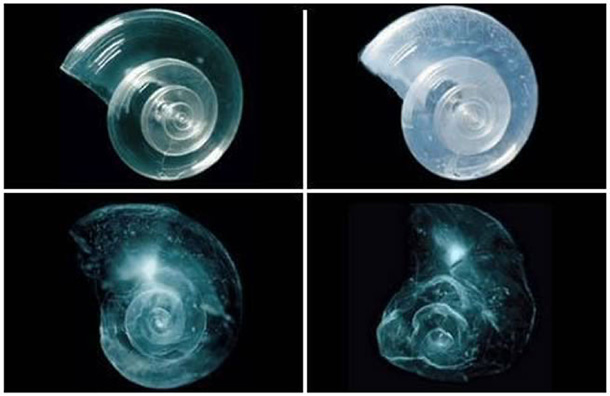
Among the harmful effects of ocean acidification is lower carbonate levels in the shells of Pteropods and other calcifying species. (Photo: David Littschwager/National Geographic Society)
JEFFERS: Thanks for having me.
CURWOOD: So, what prompted the Center for Biological Diversity to file this lawsuit?
JEFFERS: Well, ocean acidification is a huge problem. Most people have heard of global warming, but ocean acidification is equally devastating, but it flies under the radar a little bit.
CURWOOD: So what is ocean acidification?
JEFFERS: Ocean acidification is the process by which the oceans absorb about a third of the carbon emissions that we put into the atmosphere as a result of burning fossil fuels, and as the oceans absorb these emissions, it causes reactions in the seawater that make it more acidic, and increasing acidity makes it harder for organisms like shellfish and coral to form the hard parts, like calcium carbonate shells that they need to survive.
CURWOOD: So how has the acidity of the ocean changed then in recent decades?
JEFFERS: Well in the last -- since the industrial revolution really -- so over the last 200 years, oceans have absorbed about a third of our emissions, and the ocean has become approximately 30 percent more acidic which is really just a huge change, if you think about it. For example, an oyster that used to be able to build it shell, the 30 percent changes enough to make that shell begin to dissolve. And in the last 300 million years of Earth's history, that is the fastest acidification event that the Earth has experienced.
CURWOOD: So, this has going on for a long time, but now you're filing a lawsuit. What kind of formal pleas or complaints has the Center for Biological Diversity put forward about this issue in the past?
JEFFERS: Well, we started engaging with the EPA in 2007. We asked them then to change their water quality standard for pH to make it more strict. So the way the Clean Water Act works is the federal government, the EPA, sets water quality criteria and then the states go ahead and use that criteria to set water quality standards for their own bodies of water, and they have to either use the federal criteria or create standards that are equal to or better than the federal criteria, and we thought that the federal criteria, the pH criteria, wasn't quite strong enough and needed to have less room for error. And now the science has just exploded in the last five years on ocean acidification, and it's become increasingly clear that pH is really not the best way to measure ocean acidification.
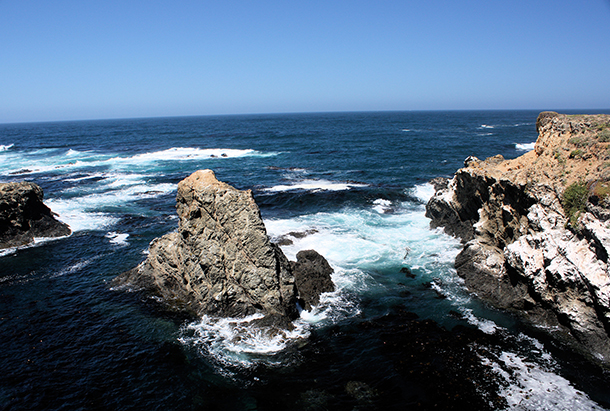
The Pacific Ocean off the Western coast of the U.S. has higher average levels of acidity, in part because the colder waters dissolve more carbon dioxide. (Photo: Naotake Murayama, Flickr CC BY 2.0)
CURWOOD: So would changing the scientific standards help the organization preserve ocean ecosystems, do you think?
JEFFERS: Well, ocean acidification, as you know, is driven by carbon emissions, and we're never going to solve the ocean acidification crisis unless we get carbon emissions under control and transition to renewable energy. However, in the near term there are other strategies that we can take. We can reduce local inputs that are increasing acidification. Local runoff, local storm water, agricultural discharge, those are all discharges that contain chemicals that exacerbate acidification, and if we can get those local pollution sources under control, that might give the ecosystems a bit of a time to adapt or to get used to those sort of acidified conditions while we tackle climate change.
CURWOOD: But if the major source of making the oceans more acidic is the burning of fossil fuels or trees, for that matter, anything that puts carbon into the atmosphere, what's the remedy that you're asking the EPA to do here? I mean, this is a worldwide problem.
JEFFERS: Yeah, it is definitely worldwide problem and we don't underestimate how difficult it's going to be. I do think it's possible. But we really - we have to start somewhere, and the Clean Water Act, EPA has acknowledged that the Clean Water Act is applicable to ocean acidification and that it is their duty and the states’ duty to identify waters that are impaired. So we need a parameter, a standard that measures ocean acidification and that's sort of the cornerstone of the Clean Water Act, and it's something that is sorely lacking.
CURWOOD: So, if you're successful, the ultimate outcome of all this is going to be some sort of program to reduce or eliminate carbon emissions. If the EPA starts setting standards that says that burning carbon is acidifying the ocean then they got to do something about it. I mean, it's the camel's proverbial nose under the tent I would think.
JEFFERS: Well, I mean I think it would be great if they did something. We're facing the largest extinction crisis in Earth's history. It's their duty and their responsibility to do something, but what we're asking for right now is much more modest, and it’s something that scientists all over the country have been calling for.
CURWOOD: So what's the next step in legal process now you that you've filed this action?
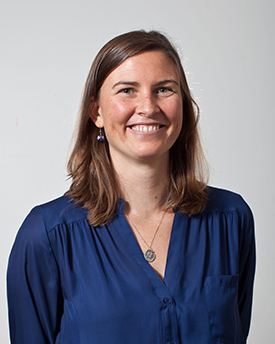
Emily Jeffers is one of the lawyers representing the Center for Biological Diversity. (Photo: Emily Jeffers/Center for Biological Diversity)
JEFFERS: The next step is that EPA has 60 days from service of process to answer our complaint, and at that time they might file a motion to dismiss or they might answer it, and after that, we'd probably have motions for summary judgment.
CURWOOD: I guess it's fair to say that the government is going to push back because haven't responded to your earlier petitions that are precursors of filing this lawsuit. What's the government's best argument against what you put up?
JEFFERS: I think their response will be, “Well, we don't know what the best water quality standard is.” But there's always going to be better science in the future. But that doesn't prevent us from acting now, especially since we have a duty to act now and to use the best available science to set water quality standards.
CURWOOD: In other words, you don't think the government has a strong argument here.
JEFFERS: No, I think that they know that it's their duty to set water quality standards and that the current standards are inadequate, and I don't think that there is an argument to be made that they aren't.
CURWOOD: Emily Jeffers is an attorney of the Center for Biological Diversity. Thanks much for taking time with us today.
JEFFERS: Oh, my pleasure.
CURWOOD: A spokesman for the EPA declined comment, and referred us to the Justice Department, which did not respond by our deadline.
Related links:
- NOAA ocean acidification information
- Center for Biological Diversity lawsuit press release
- CBD information on ocean acidity
- The EPA cites ocean acidity as a climate change indicator
[MUSIC: Jacqueline Schwab, “I Heard From Heaven Today,” Down Came an Angel, African-American Spiritual, Dorian Recordings]
CURWOOD: Coming up...why some creatures don’t need a brain to be smart. That’s just ahead on Living on Earth. Stay tuned.
ANNOUNCER: Support for Living on Earth comes from the Gordon and Betty Moore Foundation, and from a friend of Sailors for the Sea, working with boaters to restore ocean health.
[CUTAWAY MUSIC: Leonard Lopatin, “At the Hour Of Midnight,” Squarely In the Holiday Spirit, Traditional/public domain, self-published (also released on Oasis: Classical & Instrumental, Volume VIII #2, Oasis)]
One Smart Slime-Emerging Science Note

Physarum polycephalum, the many-headed slime, lives on forest floors and reaches out long tendrils to find food. (Photo: Martin Jambon, Flickr CC BY 2.0) https://www.flickr.com/photos/mjambon/6271724816
CURWOOD: It’s Living on Earth, I’m Steve Curwood. In a minute, how liquefied natural gas and salt have raised concerns in New York State’s wine country, but first this note on emerging science from Charlotte Rutty.
[MUSIC SCIENCE NOTE THEME]
RUTTY: Just a tiny fraction of life on earth boasts a nervous system, but the brainless majority seems to do just fine. Take, for example, Physarum polycephalum, or the many-headed slime. This bright yellow slime mold lives on moist forest floors, where it stretches out long tendrils to explore the world around it. It consists of just one goopy cell that can grow to up to several meters in size.
Despite its brainlessness, you could almost call this creature “smart.” Researchers use it as a model organism to study how species like it – species without nervous systems – make decisions. In past studies, scientists have found that the slime mold can solve mazes, anticipate patterns, and even remember where it’s been.
It’s not exactly thinking, though. When P. polycephalum is remembering, it’s actually just detecting the sticky trail of mucus that it leaves behind wherever it goes, which tells the slime mold that it’s been here before. Since it doesn’t need to explore the same place twice, it moves on.
It’s processes like this that the slime mold is helping science understand – behaviors that look a little like thinking, even though they happen without a brain. Most recently, a team of biologists at the New Jersey Institute of Technology put this organism through a classic cognition test, The Two-armed Bandit. They gave the slime mold a choice: two directions to explore, each one rewarding it with food. At first, the slime mold tried both directions equally. But after three to four hours, it figured out that there was more food in one direction than in the other, and after that it headed only down the one with the better payoff. Of the individual slime molds they tested, 80 to 90 percent moved in the right direction – and that’s a result similar to those achieved by mammals and birds on the same test.
So this humble, yellow slime has a lot to teach us about the mechanisms of cognition. You don’t have to be brainy to make decisions.
That’s this week’s note on emerging science. I’m Charlotte Rutty.
Related links:
- Time-lapse video of Physarum polycephalum solving a maze
- BBC: Time-lapse video of a yellow slime mold finding food
- Encyclopedia of Life: “Physarum Polycephalum”
- The NJIT study, entitled “Decision-making without a brain: how an amoeboid organism solves the two-armed bandit”
[MUSIC: SCIENCE NOTE THEME]
Wine, Water and Natural Gas
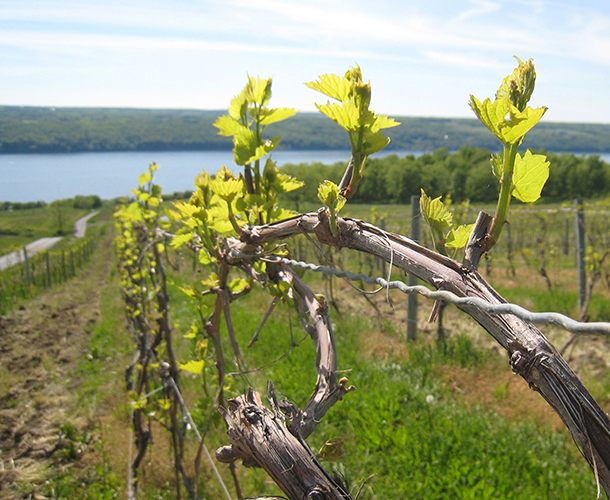
Vineyards by Seneca Lake (Photo: Logan Ingalls, Flickr CC BY 2.0)
CURWOOD: The glut of natural gas from the fracking boom has industry looking to export it and store it, with over 400 underground storage facilities in the US in places such as old mines and depleted aquifers. And that demand for storage is how some residents and wineries in the Finger Lakes region of New York got involved in a long term standoff with Crestwood Equity Partners. The Allegheny Front’s Julie Grant visited Seneca Lake, to look at Crestwood’s plans to store natural gas and propane from Pennsylvania and Ohio in the salt caverns there.
GRANT: Driving around Seneca Lake, evidence of industry is everywhere.
[SOUND OF WINERY TASTING ROOM]
GRANT: The wine industry, that is. There are fields upon fields of grapevines, with wineries and tasting rooms nestled along the lakeside, like this one.
DAMIANA: My name is Lou Damiani. I’m co-owner of Damiani Wine Cellars, here on beautiful Seneca Lake.
GRANT: Damiani grew up around here. He and his partners started clearing land and planting grapes in the early 1990s....
DAMIANA: And realized the revolution that was taking place here in the grapes we could grow and the wines we could produce.
GRANT: In recent years, internationally known vintners have moved to the Finger Lakes. The industry has blossomed into more than 100 wineries, distilleries, and breweries. It’s been named a top destination for wine lovers. Still, Damiani has kept his job at Cornell University.
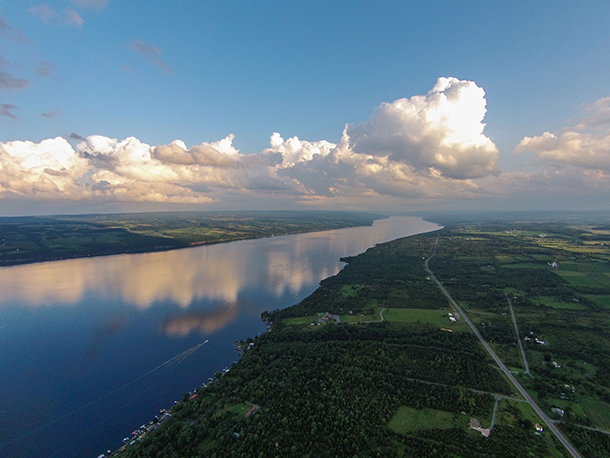
Seneca Lake in upstate New York is the largest of the glacial Finger Lakes. (Photo: redisant, Flickr CC BY-NC-ND 2.0)
DAMIANA: It’s a struggle. It’s a tough, competitive business, and every little thing matters in this business. The main part of it is tourism.
GRANT: Tourism. It’s a three billion dollar a year industry in the Finger Lakes, employing nearly 60,000 people.
[SOUNDS OF STREET]
GRANT: On the late spring weekend I visited, the town of Watkins Glen on the southern edge of the lake was packed. And the nearby state park? It’s one of the most visited in the country. We could barely squeeze through some spots, there were so many people taking selfies.Many tourists come to taste and buy wine. They also boat and fish on Seneca Lake, a deep, and salty lake that supplies drinking water to 100,000 people.
Looking out the tasting room window, over the grapevines, Damiani points across the Lake to the US Salt plant. He and others who work and live here worry about a plan under consideration by the New York Department of Environmental Conservation to store natural gas, propane and butane in the salt caverns.
[SALT PLANT NOISES]
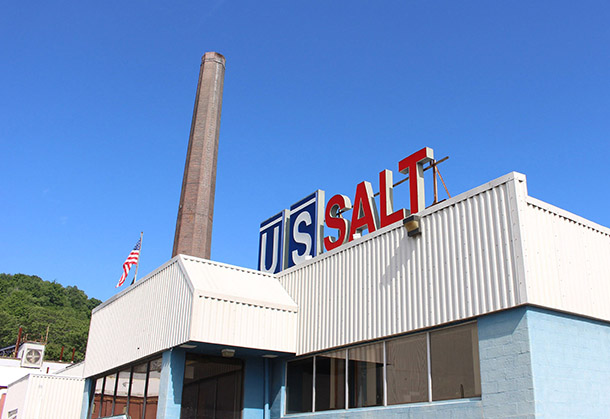
The US Salt plant in Schuyler County, New York on the shores of Seneca Lake. (Photo: Julie Grant)
GRANT: This is the sound of salt being packaged and shipped out at the plant in Watkins Glen for pharmaceuticals, cleaning, and just regular table salt. Salt has been mined under Seneca Lake for over a hundred years. The company that’s now called Crestwood bought US Salt in 2008. Crestwood declined an interview for this story, but they got me in touch with Mike Gilbert, a union worker at the plant.
GILBERT: I work in the shipping department. I’ve been here for about fifteen years now.
GRANT: I caught up with Gilbert around 8:00 A.M., during his second shift. He says, to get the salt, they pump millions of gallons of water down thousands of feet into the caverns at high pressure. The salt dissolves in the water, and then they pump it back up…
GILBERT: ...it’s a brine. Brine is a liquid. It looks like water. You wouldn’t know unless you actually taste it that it’s very salty.
GRANT: The brine is stored in open ponds, or pits. It’s heated, to evaporate the water.
Crestwood wants to use the salt caverns to store fuels.
GILBERT: What they’re proposing to do is put propane down in there.
GRANT: 1.5 million gallons of propane, as well as 600,000 thousand gallons of butane. The company already stores natural gas in the salt caverns, and wants to expand that capacity.
Gilbert says the United Steelworkers support the project. Crestwood plans to add up to 17 full time jobs.
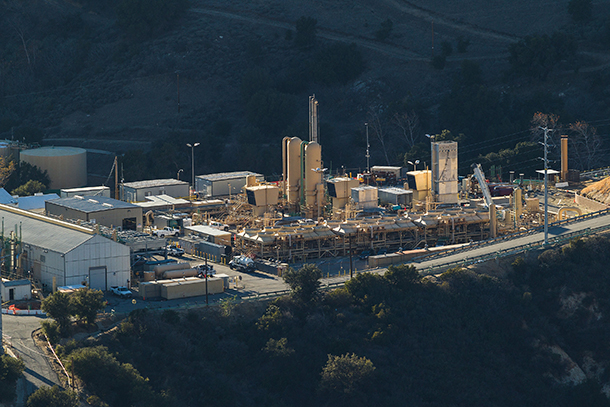
Some Seneca Lake residents express concern that storing natural gas, propane and butane underground in the salt caverns there risks a disaster such as the massive leak at Aliso Canyon in California, which spewed methane for four months. (Photo: Scott L, Flickr CC BY-SA 2.0)
GILBERT: I would love to be able to give 17 people the same chance that I’ve had to raise my family. If 17 more people could do that in this area, that’d be phenomenal.
GRANT: But a lot people don’t think it’s worth the risk.
SOUND: PROTEST SOUNDS. CHANTING “WE ARE SENECA LAKE”.
More than six hundred of people have been arrested protesting Crestwood during the years its storage plans have been under consideration. They regularly stand at Crestwood’s front gates with signs like, “Make love, not methane” and “We are Seneca Lake.”
Anti-fracking activist David Braun of California recently joined them.
BRAUN: I am risking arrest with you all today, because of disasters with gas storage that I have seen up close. Don’t let it happen here.
GRANT: Braun is talking about the huge leak from the Aliso Canyon - where they store gas in depleted oil fields. It spewed methane into the air for nearly four months, before being plugged in February.
BRAUN: Like the facility here at Seneca Lake, the Aliso Canyon facility was created from unlined holes in the ground that were never engineered to store anything, let alone highly pressurized, flammable gas.

The Finger Lakes region has 11,000 acres of vineyards. (Photo: Visit Finger Lakes, Flickr CC BY 2.0)
GRANT: The New York DEC found last year that opponents have not provided adequate proof to back up their concerns about the Crestwood’s plan, although it hasn’t given final approvals for the project. And the Federal Energy Regulatory Commission has already approved the natural gas expansion project.
BARNES: And so, based on that, I don’t know why it just can’t get going. It’s really a political situation.
GRANT: I met Philip Barnes, a retired security officer, on the docks in downtown Watkins Glen. He’s a legislator in Schuyler County, where this is being debated.
BARNES: It’s totally up to the Governor to make a decision. And it’s been six, seven, eight years now in the making.
GRANT: Governor Andrew Cuomo banned fracking in New York a couple of years ago. This spring, the DEC denied water permits for the Constitution natural gas pipeline, from Pennsylvania to Albany. Opponents of Crestwood’s plans want the DEC to continue this anti-fracking trend. They say the company is trying to make Seneca Lake a hub for fracked fuels from Pennsylvania to supply the entire Northeast, and they want the administration to stop it.
GRANT: Many are worried about the project’s impact on water quality.
[SOUNDS OF HAZLETT FARM’S TELEPHONE RINGING AND WOMAN ANSWERING]
Tina Hazlett manages a vineyard here that’s been in her husband’s family since 1852.
HAZLETT: So we’re already, Seneca Lake is the saltiest lake in the Finger Lakes, and it’s because of those salt caverns.
GRANT: Hazlett points to research that shows moving pressurized fuels into and out of the salt caverns could push the salinity of the lake even higher.
HAZLETT: They’re already telling people if you’re young or elderly or have high blood pressure don’t drink this water. This is the water source for over 100,000 people. There’s no other water source, so, you know, what are people supposed to do?
Julie Grant reports for the Allegheny Front (Photo: Allegheny Front)
GRANT: Geologist John Halfman lives here, and has been studying the salinity issue in Seneca Lake for 25 years. He agrees with the DEC, storing fuels in the salt caverns should be safe.
HALFMAN: If everything goes as planned, nothing’s going to happen, in which case I think it’s a good idea. If there is some unfortunate mistake, then it’s a horrible idea.
GRANT: The DEC would not comment for this story. Crestwood and the community are awaiting their permitting decisions. I’m Julie Grant.
CURWOOD: Julie reports for the Pennsylvania public radio program, the Allegheny Front.
Related links:
- The Finger Lakes
- DC Bureau: “LPG Storage in NY Salt Cavern Linked to Salinity Spike in Drinking Water”
- Bloomberg: “N.Y. Officially Bans Fracking With Release Of Seven-Year Study”
- Finger Lakes LPG Storage Permit Hearing
- LOE’s coverage of the Aliso Canyon methane leak
- See the story on the Allegheny Front website
[MUSIC: Santana, “Jin-Go-La-Ba,” The Very Best Of Santana, Babatundi Olatunji, Time Music]
Beyond The Headlines
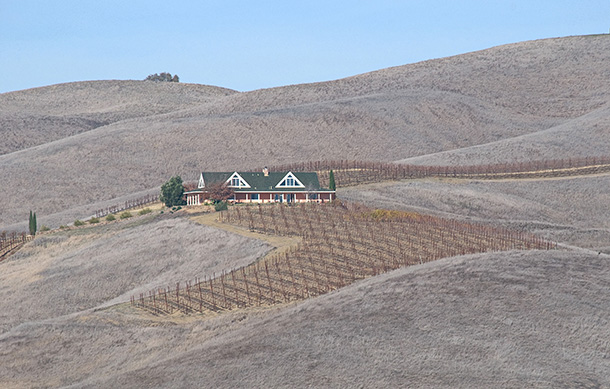
New research from a team at UCLA suggests the California drought, which is in its fifth year, could last for centuries. (Photo: John Weiss, Flickr CC BY-NC-ND 2.0)
CURWOOD: Let’s catch up with Peter Dykstra now to see what he’s found beyond the headlines. Peter's with Environmental Health News, that’s EHN.org and DailyClimate.org, and he's on the line from Conyers, Georgia. Hi there, Peter.
DYKSTRA: Hi, Steve. This week I need to start us off with a listener alert because I’m about to invoke what I remember as some really bad music from the 1970s. There was a song called “It Never Rains in Southern California”. A recent UCLA study says that may be the case for centuries.
CURWOOD: Centuries? That’s bad news for those Californians who secretly hope they’ll be able to take a long shower someday.
DYKSTRA: True enough, and publishing in the journal Nature, the researchers from a very un-rainy Southern California compared the records of sediment samples in the Sierra Nevada Mountains and found strong evidence that the kind of ocean temperature shifts that are now underway match long periods of drought in California.
CURWOOD: Well, we’re used to thinking of drought as lasting for just a few years, like it did in Texas awhile back, but these folks are suggesting that the California drought could last for centuries?
DYKSTRA: Yes, and the singer Albert Hammond could be getting residuals for that lamentable “It Never Rains in Southern California” song for centuries, too.
CURWOOD: Wow, drought and seventies music forever. What’s next?
DYKSTRA: After all these centuries, we’ve finally found a way to make our oceans quiet down a little.
CURWOOD: Oh, how?
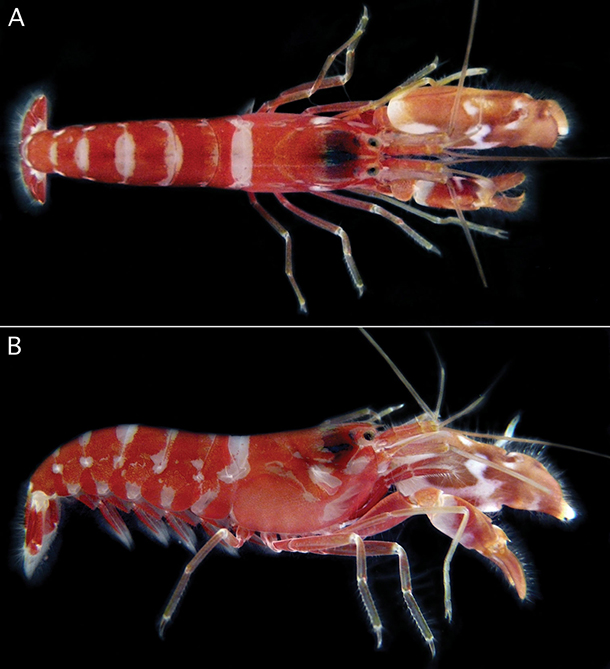
Side views of the snapping shrimp, a noisy crustacean that produces sound with its oversized claw, is at risk from acidifying oceans. (Photo: Anker A, Grave S, Wikimedia Commons CC BY 3.0)
DYKSTRA: Researchers from the University of Adelaide in Australia have been following how man-made biological and chemical changes to the ocean affect what they call the ocean soundscape. They’ve studied creatures like the snapping shrimp, which creates a surprisingly loud snapping sound when it closes its one oversized claw. There’s other marine life, from sea urchins to parrotfish, that are relatively noisy feeders, and of course the songs of many whale species can be heard hundreds of miles away from the source.
CURWOOD: So where do people fit in to all of this?
DYKSTRA: Well, by introducing nutrients into the ocean, we’re damaging some of the noisiest areas of the ocean, like coral reefs and kelp beds – fewer creatures means less noise. And by acidifying the oceans, the Australian researchers say we may be changing the behavior of sea life. They studied snapping shrimp in slightly acidified water, and guess what? They snapped less. This is important because that natural soundscape is key for how some species navigate and feed.
CURWOOD: And, of course, sounds from ship traffic have also changed how the ocean sounds.
DYKSTRA: In a big way.
CURWOOD: So before we ask you to clam up, it’s time for our weekly plunge into environmental history. What’s up this week?
DYKSTRA: A tiny fish with a goofy name. This week, back in the year 1979, President Jimmy Carter signed a bill authorizing the Tellico Dam on the Little Tennessee River. He did this in spite of the presence of an endangered fish called the Snail Darter. We were in the middle of the second energy crisis of the 1970’s. Scientists and environmentalists cited the Endangered Species Act as a reason to halt construction on a dam that would have turned the Snail Darter’s rushing-water stream habitat into a huge, placid, artificial lake.
CURWOOD: Yeah, give folks a choice between more electricity and a tiny fish with an odd name and guess what…
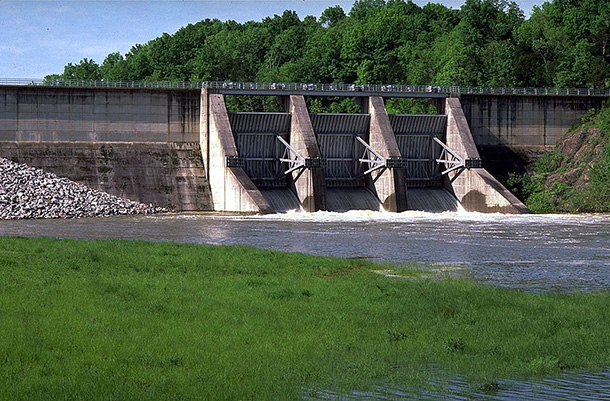
Construction of the Tellico dam was halted in 1979 after the discovery of an endangered fish called the snail darter. Although the dam was ultimately completed, it has never been used to generate electricity. (Photo: Tennessee Valley Authority, Wikimedia Commons CC government work)
DYKSTRA: Yeah, despite strong science and really sound ecological reasoning, even a President with a fairly strong environmental record like Jimmy Carter wasn’t going to lead a biological bailout for a tiny fish. So biologists gathered up as many Snail Darters as they could and dropped them off in another nearby river. Today, there are known Snail Darter populations in about a half-dozen streams, and the species has been upgraded from endangered to threatened. And even though some folks used the energy crisis as a motive for completing Tellico Dam, it’s never been used to generate hydroelectric power.
CURWOOD: The first high-profile battle over an obscure species, but hardly the last, right?
DYKSTRA: Right, a few years later, we saw the same battle lines drawn in the forests of the Pacific Northwest over the Northern Spotted Owl, and today we’ve got the Sage Grouse on the western prairies, and, of course, another fish with a goofy name, the Delta Smelt, a potential victim of that same California drought.
CURWOOD: Ah, a fish out of water. Well, that’s a popular Hollywood movie theme anyway.
DYKSTRA: Right.
CURWOOD: Peter Dykstra is with Environmental Health news that EHN.org and DailyClimate.org. Thanks, Peter, we’ll talk to you again real soon.
DYKSTRA: Thank you, Steve, talk to you soon.
CURWOOD: And there’s more on these stories on our website LOE.org.
Related links:
- “California’s drought could continue for centuries”
- Australian Geographic: “The silencing of the seas: how our oceans are going quiet”
- Journal article on ocean acidification’s silencing of the snapping shrimp
- Video/audio of the snapping shrimp’s noise
- Snail Darter history
- Singer Albert Hammond performing his 1972 Billboard hit, “It Never Rains In Southern California”
[MUSIC: Albert Hammond, “It Never Rains In Southern California,” It Never Rains In Southern California, Albert Hammond/Mike Hazlewood, Mums Records]
CURWOOD: Coming up...how a patch of the White Mountain National Forest led to a major scientific discovery. That’s just ahead here on Living on Earth. Stay tuned.
ANNOUNCER: Funding for Living on Earth comes from you our listeners, and United Technologies - combining passion for science with engineering to create solutions designed for sustainability in the aerospace, food refrigeration and building industries. UTC companies such as Otis, Carrier, Pratt & Whitney and UTC Aerospace Systems are helping to move the world forward. This is PRI, Public Radio International.
[CUTAWAY MUSIC: Laurel Zucker, “Arabesque In Motion,” Inflorescence III: Music for Solo Flute, Philip Glass, Cantilena Records (also released on Oasis: Classical & Instrumental, Volume VIII #2, Oasis)]
Hubbard Brook: An 8,000-acre Test Tube

Concrete structures called gauging weirs are placed within each watershed under scientific study at Hubbard Brook Experimental Forest. The v-notch in the weir allows precise measurements of the quantity of water moving downslope, and scientists gather water samples from the collection basin. (Photo: Jenni Doering)
CURWOOD: It’s Living on Earth, I’m Steve Curwood. The White Mountains of New Hampshire house one of the largest ‘test tubes’ in science. Scientists working in the nearly 8,000 acres of Hemlock, Red Spruce, Sugar Maple, and other trees of the Hubbard Brook Experimental Forest have made some of the major scientific discoveries in forest science of the last 50 years. And every year scientists from all over the country gather to compare notes on their research.
[SOUNDS OF A CROWD OF PEOPLE TALKING.]
LAPINE: Oh my gosh, I don’t know what we would do without Hubbard Brook. There’s been research going on here since the 70s, and the long-term record allows us to answer so many questions and we’re really continuing to add to that dataset.
CURWOOD: Lucy Lapine of the University of New Hampshire and Cornell University professor Christie Goodale are among the hundred-odd scientists who came to this session.
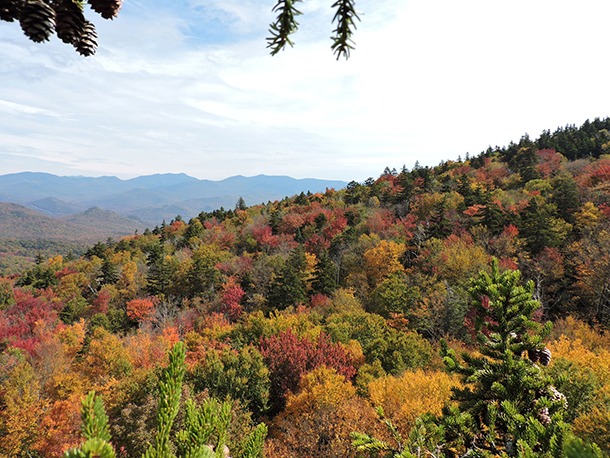
The northern hardwood forest at Hubbard Brook in autumn. The canopy is dominated by deciduous species such as sugar maple, yellow birch, and American beech, with some conifers. (Photo: D. C. Buso)
GOODALE: Hubbard Brook itself is such a well-studied ecosystem and yet there are still so many surprises, and things we can’t explain about how forests work. Even though we’ve been studying this for 40 or 50 years, there are still surprises.
CURWOOD: Surprises have punctuated the work of Gene Likens of the Cary Institute of Ecosystem Studies, one of the cofounders of the Hubbard Brook project. Along with Dick Holmes, a Dartmouth biology professor, he lays out these breakthroughs in "Hubbard Brook: The Story of a Forest Ecosystem".
CURWOOD: I joined them both one warm summer day and Gene described the landscape.
[SOUNDS OF HUBBARD BROOK AND FOREST]

The main Hubbard Brook. (Photo: Jenni Doering)
LIKENS: This is the main Hubbard Brook. We’re at the base of the Hubbard Brook valley, and it’s drained by a network of streams, and this is kind of the summation of all the things that have happened above this point in the valley.
CURWOOD: So, Hubbard Brook as a research station in this forest started in 1955?
LIKENS: Yes.
CURWOOD: Why? Whose idea was this?
LIKENS: Well, the U.S. Forest Service was looking for a place to establish a major hydrological facility, a place to measure all the water, the precipitation and the streamflow and the storage and everything that goes into a water budget for a system. And so they looked carefully all over New England and they evaluated a number of different sites and this one they selected because it had the characteristics that they were looking for, a large bowl-shaped valley, relatively homogeneous vegetation and geology -- We now know this is homogeneous as they thought it might be at that time, -- and then also they thought that it was very likely to have a relatively watertight, geologic basement so that all the water that was flowing, like this river, would be measured accurately, quantitatively, and we wouldn't be confounded by water that was going deep, deep seepage in the ground water.
We started with a simple metaphor that, could we use the chemistry of stream water much like a physician uses the chemistry of blood and urine, and so if that chemistry changes or is different than we expect then something may be going on.
CURWOOD: Dick, this study has been going on here for a long time. What's the power of a longitudinal study?
HOLMES: Well, one starts to see patterns that one can't see in short time, and that gives you things to look for and try to understand what's causing these changes. So, now in 50 years, we have a long dataset to try to look at different kinds of things, everything from the stream water chemistry, as Gene pointed out, to bird population changes over a long time period.
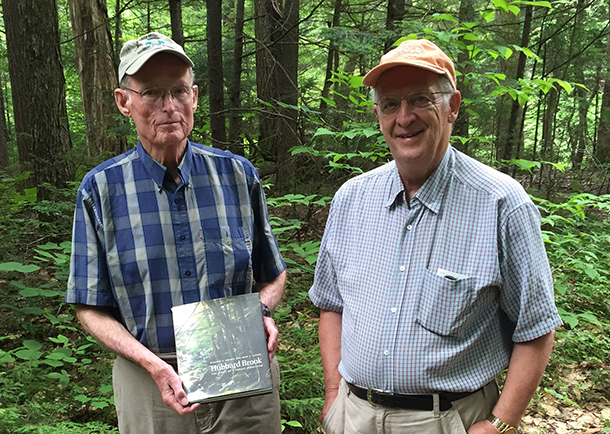
Richard Holmes, left, and Gene Likens are the authors of Hubbard Brook: The Story of a Forest Ecosystem (Photo: Steve Curwood)
CURWOOD: Looking at this stream here, I'm reminded what's probably the most famous about the Hubbard Brook experimental station is the ascertainment of the effects of acid rain. Please tell me that story.
LIKENS: It was actually the discovery of acid rain. In 1963, in July, the first sample rain that we collected was about 100 times more acidic than we thought it should be. We were really shocked. We wondered if it was some mistake we were making. We wondered if it was something unique to the White Mountains and the Hampshire -- This is the Granite State, after all -- and I set up rain collecting stations around the Finger Lakes, nearby Ithaca, New York, and found that the rain chemistry there was just about what we had been measuring in White Mountains, Hubbard Brook. Herb Bormann and I published a paper in Science Magazine saying that it was a regional problem, and it was primarily caused by the emission of sulfur dioxides and nitrogen oxides from the Midwest, primarily in the production of electricity by burning coal and oil in places like Indiana, Ohio, Illinois, Kentucky, and that those pollutants were being transported in the atmosphere to places like this and coming down to us as acid rain, with sulfuric acid and nitric acid being the strong acids. That paper was picked up by the New York Times and featured on the front page and that changed my life forever.
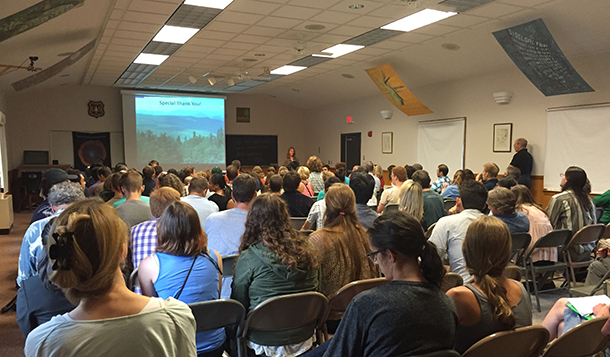
Scientists and students gathered at the 2016 Hubbard Brook Cooperators’ Meeting, a yearly chance for those involved in the Hubbard Brook Ecosystem Study to share their research results and build collaborative friendships. (Photo: Steve Curwood)
CURWOOD: Oh? What happened next?
LIKENS: Everything. So I had phone calls and letters and inquiries from literally all over the world about what was going on. We then were doing other studies. We were trying to answer these questions. Were those pollutants really coming from the Midwest to here? We tried to follow plumes in small aircraft. We had cars on the ground trying to follow plumes that were above us, and if it would rain we would rush out with our collectors and hand hold them and try to collect samples of the rain, really very primitive, but that's all we had. We did try to use some isotopes that were in the coal and see if we could find them in the rain that was falling here. And the data were really quite convincing that that's where the plumes were coming from, the Midwest.
We also wanted to know, and needed to know, how long it had been acid. Was it something new or usual? And so two colleagues and I set up sites in the remotest places that we could find in the world. We had a site in southern Chile. We had a site in the southern tip of Africa. We had a site the middle of the Indian Ocean on an little island, and we found that, yes, these were unusual values, and that the background probably was at a pH of about 5.1, and we were measuring sometimes in the threes. The lowest pH we ever measured here was 2.85, which is really, really very acid. Of course, it was a very controversial issue. The electrical utilities in the Midwest were saying, “No, no, no, not us. We didn't do it”, just like what we here today are saying with climate change, and we were saying, “Yes, yes, yes, you are.” But as a scientist you have to do more than point your finger. You have to collect data that tries to answer the questions quantitatively, and that's what we did.
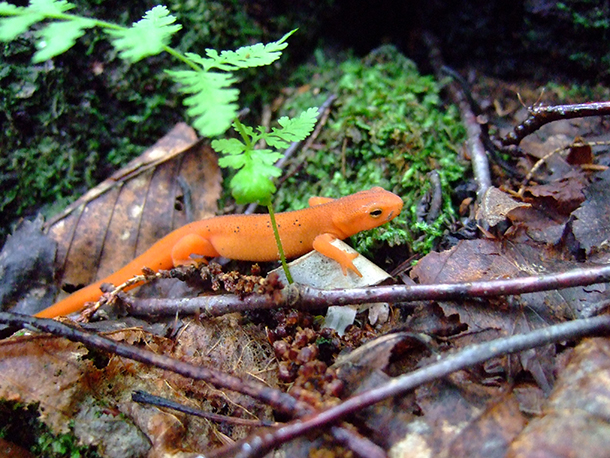
Hubbard Brook Experimental Forest is home to salamanders like the red-spotted newt (Photo: g.h.vandoorn, Flickr CC BY-NC 2.0)
CURWOOD: So you have all this data. What happens next?
LIKENS: Well, then I guess what happens next is to publish. That's what you do as scientists. A lot of really interesting stories there. I gave a lecture once at the University of California, Davis. I didn't realize there was a reporter in the audience. The Sacramento Bee the next morning had a headline in the newspaper, “Prof Says Rain on Acid Trip.”
CURWOOD: [LAUGHS]
LIKENS: Well, in California...but even though it was totally wrong, in terms of what we were talking about, it did provide publicity. In 1990, President George Bush the first signed into the law the first Clean Air Act amendments that dealt specifically with reducing acid rain.
CURWOOD: So talk to me about the effects on the forest then and now.
LIKENS: Standing right here, this forest looks quite healthy. I mean, it's green, it’s lush, but particularly in the upper elevations, in the places where we've done detailed studies, we know that it's not, particularly the Sugar Maple. The Sugar Maple has been impacted quite significantly, primarily through the higher acidity in the soil and, maybe more importantly, the mobilization of aluminum. The acidities that we're talking about are enough to mobilize aluminum. Aluminum is toxic to fine roots of trees, and so Sugar Maple have responded to that with a much increased mortality.
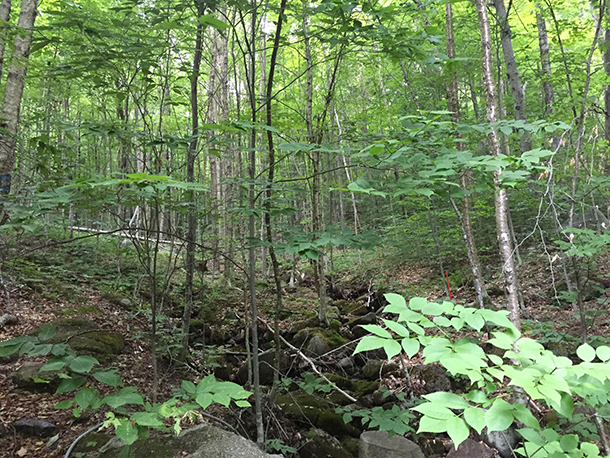
The narrow, packed trunks of hardwood trees, several decades after an experimental clearcut in one watershed. (Photo: Steve Curwood)
Red Spruce is impacted by rain falling on the needles leaching calcium out of the needles, and then the tree, the Red Spruce is much less able to resist cold weather in wintertime. So, in the sort of typical, classical approach we take here at Hubbard Brook, we did a whole watershed scale manipulation.
HOLMES: There’s one big watershed, the Hubbard Brook Valley, which we're sitting next to the stream that it drains to, but then in the upper reaches of the valley itself we've defined nine, small, upper watersheds that we have done various kinds of studies in and experiments with. Various kinds of forest harvesting techniques -- One watershed was clear-cut. One of the experiments was calcium addition to understand whether calcium was a limiting factor or not.
LIKENS: This is my test tube. We wanted to add back all the calcium that we calculated had been leached in the previous 50 years. So calcium silicate was sprinkled all over an entire watershed to replace all the calcium that had been lost. Long story short, calcium is very important. Calcium seems to be a limiting nutrient in these forests that have been so impacted by acid rain.
HOLMES: The forest had slowed in its growth, and this calcium experiment allowed us to experimentally show that calcium was one of the factors that was causing the growth to drop off.
CURWOOD: So, the Clean Air Act amendments of 1990 goes through. What the law calls for, is it strong enough to meet the concerns that you as a scientist have discovered?
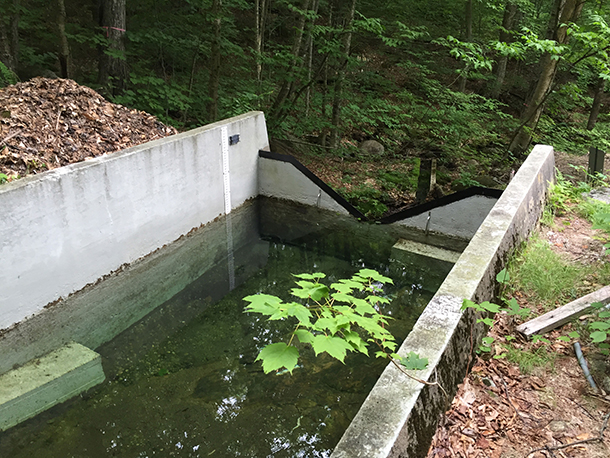
The collection basin and v-notch of a gauging weir (Photo: Jenni Doering)
LIKENS: The new laws have done a lot of good. I think, by all accounts, you have to say there were successful. The acidity of rain here is now about 80 percent less than it was in 1970 when it actually peaked. This is a sensitive system because the rocks have little buffering capacity, and the soils have small amounts of buffering capacity. The acidity of the rain and the snow has leached away a lot of that. We calculate that maybe 50 percent of the available calcium has been leached away by acid rain. So that means we've leached away a lot of the Rolaids and the Tums in the soil if you will. And so, even though the acidity of the rain is much, much less, the soils have much reduced buffering capacity so there's still an impact. It's still with us unfortunately.
CURWOOD: We pull open a gate, lock it behind us, and head higher up in the watershed.
[CREAKY GATE]
CURWOOD: After a short drive, Gene Likens leads Dick and I to the edge of a large concrete basin.
[CAR DOOR SLAMS, WALKING]
[WATER BUBBLING]
LIKENS: This is a gauging weir. It’s a device that forces all the water moving downslope to move through it, and there's a V-notch, and the water flows through that V-notch to tell us how much flow is occurring. We collect not only the water but all the chemicals that are in the water, and that's chemically analyzed. And then eroded particulate matter, and you can see the pile on the other side. So all of the export from this system is quantitatively measured.
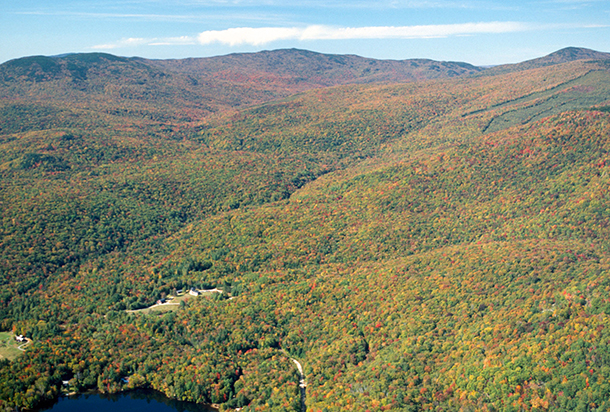
An aerial view looking west of the Hubbard Brook valley in early autumn, 1996, with several experimentally manipulated watersheds at the upper right, and the Robert S. Pierce Ecosystem Laboratory of the U.S. Forest Service and part of Mirror Lake in the foreground at left. (Photo: J. F. Franklin)
CURWOOD: The Hubbard Brook has helped document the effects of clearcutting, acid rain, and now there's a lot of concern, of course, about climate change. What's this research station doing in terms of improving our understanding of the impact of climate change?
HOLMES: Well, I guess the first thing is they're documenting the fact the climate is changing. There are a series of weather stations throughout the valley that have been in operation since the 1950s or early 1960s, and this gives a 50 to 60 year record of temperature changes, precipitation changes.
LIKENS: There's less snow pack. There's more rain and ice storms and hail in the winter time, and we see that those changes that are occurring and the physical features, the temperature and the wetness, affect many organisms. Dick, the earlier bud break and longer growing season.
HOLMES: The time at which leaves come on the trees in the spring so there’s now leafing out earlier than it was 20, 30, 40 years ago. This has an effect on the animal populations, in terms of when the birds arrive and when the insects start to become abundant, and affect the timing of breeding of animal species that are living here in the forest. So far, we haven't detected a negative effect. The birds, for instance, seem to be adjusting to that time shift, but if it gets to be early enough it could impact their success.
LIKENS: So that's interesting. So far, so good in terms of climate you're saying.
HOLMES: Well, so far not bad.
LIKENS: Not bad.

Dick Holmes, Steve Curwood and Gene Likens at one of the upper watersheds in the forest (Photo: Jenni Doering)
[LAUGHTER]
CURWOOD: These days the Forest Service limits clear-cuts to 100 acres or less, a regulation that’s based in part on the research that was conducted at Hubbard Brook Experimental Forest. Dick Holmes recalled that research sometimes involved clear-cutting entire watersheds.
HOLMES: Well, these were done for various purposes, but overall they give us results showing what the effects of different kinds of harvesting techniques are on the forest systems, and one of the first ones that was done, the first one, was Watershed Two, which was an area that was clear-cut and the trees were left in place rather than removed. They were just dropped, chopped up a bit and left as debris on the forest floor. And one of the results of that was that the water flow from that system increased drastically. Then, when the chemistry of the water was sampled, it was found that the nitrate level in the water was very, very high. In fact, it was so high that it didn't meet the public health standards. So, removing vegetation changed the water chemistry, in making it less suitable for human use. And so that caused a major concern among forestry people, lumbermen, who were cutting, if they were going to clear-cut forests which is an official way of getting wood off from their perspective, it has these negative effects. People went out to other commercial clear-cuts to see if the same effect was found out there, and it was. And that led to a lot of discussion about whether you should clear-cut or not, or how big an area you should clear cut, whether you should have small areas that have less impact, this sort of thing. This modified eventually some of the forestry practices in the White Mountain National Forest, at least, and probably elsewhere.
LIKENS: Yeah, we tried to purpose a set of guidelines for how you could harvest timber by more massive clearcutting operations. Because until we have some substitute for wood totally, we're going to need wood. We're going to need paper and products that we collect and harvest from a landscape like this. We needed to know if there was a better way to do it, a less harmful, environmental way, and so we purposed a set of guidelines about how big cuts should be, what kinds of slopes should be involved, whether they would be cut very often or not. We proposed that logs shouldn't be skidded down stream channels, which they were. They shouldn't be cut more often than once every 75 years. The Forest Service now has a regulation that they shouldn't be cut more than once every 100 years, so that's good.
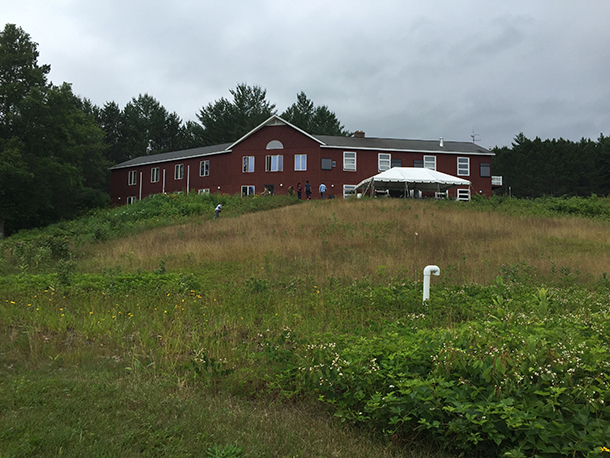
The Robert S. Pierce Ecosystem Laboratory, named in memory of one of the founders of the Hubbard Brook Ecosystem Study, serves as headquarters for the U.S. Forest Service staff who manage the forest. (Photo: Steve Curwood)
CURWOOD: You must feel pretty good about having done this research. You've had a tremendous impact on a vast amount of territory, ecosystem, lives.
LIKENS: Well, yeah, I do actually. I'm not sure how humble that statement is, but the impact on the natural system that I care deeply about, and was being severely negatively impacted, to help be able to find out why and to understand how it can be protected, one, with the 1990 Clean Air Act Amendments that reduced the source -- That's the main thing, cutting back on what's causing the problem -- and then management manipulations that might be helpful on a more local scale, protect beautiful natural systems and a vital natural system. This system provides us with clean air, clean water, I mean, all those ecosystem services that we as humans depend upon.
CURWOOD: Richard Holmes and Gene Likens are authors of “Hubbard Brook: The Story of a Forest Ecosystem”. Thank you, gentlemen, for taking the time.
LIKENS: Thank you.
HOLMES: Thank you.
Related links:
- Hubbard Brook Ecosystem Study
- U.S. Forest Service on Hubbard Brook Experimental Forest (HBEF)
- The watersheds at HBEF
- Acid rain research at HBEF
- Climate change at HBEF
- Hubbard Brook: The Story of a Forest Ecosystem
[MUSIC: Tomoko Sugawara, “Ebb Tide,” Spring, Robert Maxwell, Tomoko Sugawara Records (also released on Oasis: Classical & Instrumental, Volume VIII #2, Oasis)]
CURWOOD: Next time on Living on Earth, 60 countries have now ratified the UN’s landmark climate accord, topping a key threshold for the Paris Agreement to take effect – what it will take to seal the deal. That’s next time, on Living on Earth.
[MUSIC: Tomoko Sugawara, “Ebb Tide,” Spring, Robert Maxwell, Tomoko Sugawara Records (also released on Oasis: Classical & Instrumental, Volume VIII #2, Oasis)]
CURWOOD: Living on Earth is produced by the World Media Foundation. Our crew includes Naomi Arenberg, Bobby Bascomb, Savannah Christiansen, Jenni Doering, Emmett Fitzgerald, Jaime Kaiser, Don Lyman, Helen Palmer, Adelaide Chen, Jennifer Marquis and Jolanda Omari. And we welcome Aidan Connolly and Alex Metzger to the team this week. Tom Tiger engineered our show, with help from Jeff Wade, Jake Rego and Noel Flatt. Alison Lirish Dean composed our themes. Find us anytime at LOE.org, and like us, please, on our Facebook page - PRI’s Living on Earth. And we tweet from @LivingonEarth. I'm Steve Curwood. Thanks for listening.
ANNOUNCER1: Funding for Living on Earth comes you, our listeners, and from the University of Massachusetts, Boston, in association with its School for the Environment, developing the next generation of environmental leaders. And from the Grantham Foundation for the protection of the environment, supporting strategic communications and collaboration in solving the world’s most pressing environmental problems. Support also comes from the Energy Foundation, serving the public interest by helping to build a strong, clean, energy economy, from Gilman Ordway, and from SolarCity, America’s solar power provider. SolarCity is dedicated to revolutionizing the way energy is delivered by giving customers a renewable alternative to fossil fuels. Information at 888-997-1703. That’s 888-997-1703.
ANNOUNCER2: PRI. Public Radio International.
Living on Earth wants to hear from you!
Living on Earth
62 Calef Highway, Suite 212
Lee, NH 03861
Telephone: 617-287-4121
E-mail: comments@loe.org
Newsletter [Click here]
Donate to Living on Earth!
Living on Earth is an independent media program and relies entirely on contributions from listeners and institutions supporting public service. Please donate now to preserve an independent environmental voice.
NewsletterLiving on Earth offers a weekly delivery of the show's rundown to your mailbox. Sign up for our newsletter today!
 Sailors For The Sea: Be the change you want to sea.
Sailors For The Sea: Be the change you want to sea.
 The Grantham Foundation for the Protection of the Environment: Committed to protecting and improving the health of the global environment.
The Grantham Foundation for the Protection of the Environment: Committed to protecting and improving the health of the global environment.
 Contribute to Living on Earth and receive, as our gift to you, an archival print of one of Mark Seth Lender's extraordinary wildlife photographs. Follow the link to see Mark's current collection of photographs.
Contribute to Living on Earth and receive, as our gift to you, an archival print of one of Mark Seth Lender's extraordinary wildlife photographs. Follow the link to see Mark's current collection of photographs.
 Buy a signed copy of Mark Seth Lender's book Smeagull the Seagull & support Living on Earth
Buy a signed copy of Mark Seth Lender's book Smeagull the Seagull & support Living on Earth

